Svt meaning medical. Supraventricular Tachycardia (SVT): Causes, Symptoms, and Treatment Options
What is supraventricular tachycardia. How does SVT affect heart rhythm. What are the common symptoms of SVT. When should you seek medical attention for SVT. What treatment options are available for managing SVT.
Understanding Supraventricular Tachycardia (SVT)
Supraventricular tachycardia (SVT) is a condition characterized by abnormally fast heart rhythms originating in the upper chambers of the heart (atria). It occurs when the electrical system controlling the heart’s rhythm malfunctions, causing sudden increases in heart rate.
In a normal heart, the sinoatrial (SA) node initiates electrical signals that trigger heartbeats, typically 60 to 100 times per minute at rest. With SVT, this orderly process is disrupted, leading to episodes of rapid heartbeats that can start and stop abruptly.
How does SVT differ from normal heart rhythm?
In SVT, the heart rate suddenly accelerates to over 100 beats per minute, even when a person is at rest. This rapid rhythm can persist for several minutes or, in some cases, several hours before returning to normal.
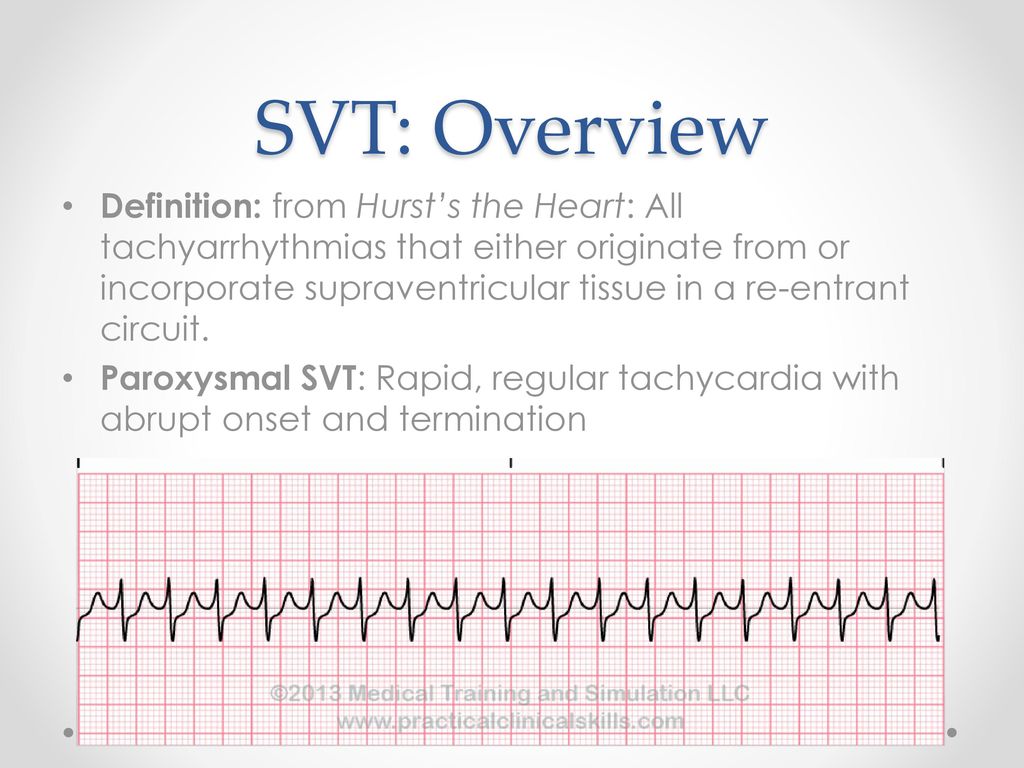
Common Causes and Triggers of SVT
While the exact cause of SVT isn’t always clear, several factors can contribute to its development or trigger episodes:
- Stress and anxiety
- Excessive caffeine or alcohol consumption
- Smoking
- Fatigue
- Certain medications
- Electrolyte imbalances
- Hormonal changes
It’s important to note that SVT can occur at any age, but many people experience their first symptoms between the ages of 25 and 40.
Recognizing the Symptoms of SVT
The primary symptom of SVT is a sudden, rapid heartbeat. However, individuals may experience additional symptoms during an episode:
- Chest pain or discomfort
- Shortness of breath
- Lightheadedness or dizziness
- Fatigue
- Nausea or vomiting
- Palpitations or heart pounding
Can SVT symptoms vary between individuals?
Yes, the frequency and duration of SVT episodes can vary significantly from person to person. Some may experience symptoms several times a day, while others might only have occasional episodes occurring once a year or less.

Diagnosing Supraventricular Tachycardia
Accurate diagnosis of SVT is crucial for effective management. Healthcare providers may use several methods to identify and confirm the condition:
- Electrocardiogram (ECG): This test records the heart’s electrical activity and can detect abnormal rhythms during an SVT episode.
- Holter monitor: A portable ECG device worn for 24-48 hours to capture heart rhythms during daily activities.
- Event recorder: A wearable device that allows patients to activate recording when they feel symptoms.
- Electrophysiology study: A more invasive procedure that involves inserting catheters into the heart to study its electrical system.
Why is early diagnosis of SVT important?
Early diagnosis allows for prompt treatment, which can help prevent complications and improve quality of life. It also enables healthcare providers to rule out more serious heart conditions that may have similar symptoms.
Treatment Options for Managing SVT
The treatment approach for SVT depends on the frequency and severity of episodes, as well as individual patient factors. Options include:

1. Lifestyle Modifications
For mild cases, simple lifestyle changes may be sufficient to manage SVT:
- Reducing caffeine and alcohol intake
- Quitting smoking
- Managing stress through relaxation techniques
- Ensuring adequate rest and sleep
2. Vagal Maneuvers
These are techniques that can help stop an SVT episode by affecting the vagus nerve, which influences heart rate:
- Valsalva maneuver (bearing down as if having a bowel movement)
- Carotid sinus massage (gently rubbing the neck where the carotid artery splits into two branches)
- Facial immersion in cold water
3. Medications
Various medications can be prescribed to control SVT:
- Beta-blockers: Slow heart rate and reduce the force of contractions
- Calcium channel blockers: Relax blood vessels and reduce heart rate
- Antiarrhythmic drugs: Help maintain normal heart rhythm
4. Cardioversion
For persistent SVT episodes, electrical cardioversion may be necessary. This procedure involves delivering a controlled electric shock to the heart to restore normal rhythm.

5. Catheter Ablation
A minimally invasive procedure that uses radiofrequency energy or extreme cold to destroy small areas of heart tissue responsible for the abnormal electrical signals causing SVT.
When to Seek Medical Attention for SVT
While SVT is rarely life-threatening, certain situations warrant immediate medical care:
- SVT episodes lasting longer than 30 minutes
- Sudden shortness of breath accompanied by chest pain
- Loss of consciousness during an episode
- Symptoms that don’t respond to usual self-management techniques
What should you do during an SVT episode?
If you experience an SVT episode, try the following steps:
- Sit or lie down to prevent injury if you feel faint
- Practice slow, deep breathing to promote relaxation
- Try vagal maneuvers as instructed by your healthcare provider
- If symptoms persist or worsen, seek medical attention
Living with Supraventricular Tachycardia
Many individuals with SVT lead normal, active lives with proper management. Here are some tips for living well with SVT:

- Follow your treatment plan as prescribed by your healthcare provider
- Keep a symptom diary to track frequency and triggers of episodes
- Stay physically active, but be aware of your limits
- Manage stress through relaxation techniques or counseling
- Attend regular check-ups to monitor your condition
Can SVT be cured completely?
While SVT cannot always be cured, many patients experience significant improvement or complete resolution of symptoms with proper treatment. Catheter ablation, in particular, has a high success rate in permanently eliminating SVT in many cases.
Advancements in SVT Research and Treatment
Ongoing research in the field of cardiac electrophysiology continues to improve our understanding and management of SVT:
- Development of more precise mapping techniques for catheter ablation
- Investigation of new antiarrhythmic medications with fewer side effects
- Exploration of genetic factors contributing to SVT susceptibility
- Advancements in non-invasive diagnostic tools for more accurate detection
How might future treatments for SVT evolve?
Future treatments may include more targeted therapies based on individual genetic profiles, improved catheter ablation techniques with higher success rates and lower risks, and potentially even gene therapy approaches to correct underlying electrical abnormalities in the heart.

As research progresses, individuals with SVT can look forward to even more effective and personalized treatment options in the coming years. Staying informed about these advancements and maintaining open communication with healthcare providers will be key to optimizing management strategies for SVT.
Supraventricular tachycardia (SVT) – NHS
Supraventricular tachycardia (SVT) is a condition where your heart suddenly beats much faster than normal. It’s not usually serious, but some people may need treatment.
Causes of supraventricular tachycardia (SVT)
SVT happens when the electrical system that controls your heart rhythm is not working properly.
This causes your heart to suddenly beat much faster. It can then slow down abruptly.
A normal resting heart rate is 60 to 100 beats per minute (bpm). But with SVT your heart rate suddenly goes above 100bpm. This can happen when you’re resting or doing exercise.
Symptoms of supraventricular tachycardia (SVT)
Having SVT means your heart suddenly beats faster.
This:
- usually lasts for a few minutes, but can sometimes last for several hours
- can happen several times a day or once a year – it varies
- can be triggered by tiredness, caffeine, alcohol or drugs – but often there’s no obvious trigger
- can happen at any age, but often starts for the first time in children and young adults – many people have their first symptoms between 25 and 40
You may get no other symptoms, but sometimes people also:
- have chest pain
- feel weak, breathless or lightheaded
- feel tired
- feel sick or are sick
Non-urgent advice: See a GP if you keep getting a fast heartbeat
It’s important to get it checked out. You might need a test, such as an electrocardiogram (ECG), to find out what’s going on.
You might need a test, such as an electrocardiogram (ECG), to find out what’s going on.
Immediate action required: Call 999 or go to A&E if:
- you have been diagnosed with SVT and your episode has lasted longer than 30 minutes
- you have sudden shortness of breath with chest pain
You need to go to hospital for treatment immediately.
Things you can do to help with supraventricular tachycardia (SVT)
If your episodes of SVT only last a few minutes and do not bother you, you may not need treatment.
You can make changes to your lifestyle to reduce your chances of having episodes, such as:
- cutting down on the amount of caffeine or alcohol you drink
- stopping or cutting back on smoking
- making sure you get enough rest
Your doctor may also be able to recommend some simple techniques to help stop episodes when they happen.
Treating supraventricular tachycardia (SVT) in hospital
SVT is rarely life threatening. But you may need treatment in hospital if you keep having long episodes.
This may include:
- medicines to control the episodes of SVT – given as tablets or through a vein
- cardioversion – a small electric shock to the heart to help it get back to a normal rhythm
- catheter ablation – a treatment where thin tubes are placed through a vein or artery into your heart to correct the problem with the electrical system; this permanently cures the problem in most patients
Find out more about:
- cardioversion: British Heart Foundation
- catheter ablation: British Heart Foundation
Page last reviewed: 27 April 2021
Next review due: 27 April 2024
Supraventricular Tachycardia | Cedars-Sinai
ABOUT
CAUSES
DIAGNOSIS
TREATMENT
NEXT STEPS
What is supraventricular tachycardia?
Supraventricular tachycardias (SVT)
is a kind of abnormally fast heart rhythm (heartbeat). It’s a problem in the electrical
It’s a problem in the electrical
system of the heart. The word supraventricular means above the ventricles. With SVT,
the
abnormal rhythm starts in the upper heart chambers (atria). This condition is also
called paroxysmal supraventricular tachycardia. That’s because the fast heart rhythms
may start and stop abruptly. They can also occur with intervals of normal heart rhythm.
Normally, a special group of cells
begin the electrical signal that triggers your heartbeat. These cells are in the
sinoatrial (SA) node. In an adult, the sinus node sends out a regular electrical pulse
60 to 100 times per minute at rest. This node is in the right atrium, the upper right
chamber of your heart. The signal quickly travels down your heart’s conducting system
to
the ventricles, the 2 lower chambers of your heart. Along the way, the signal moves
Along the way, the signal moves
through the atrioventricular (AV) node, a special group of cells between your atria
and
your ventricles. From there, the signal travels to your left and right ventricle.
As it
travels, the signal triggers nearby parts of your heart to contract. This helps your
heart pump in a coordinated way.
In SVT, the signal to start your
heartbeat doesn’t come from the SA node. Instead, it comes from another part of the
left or right atrium, or from the AV node. An area outside the SA node begins to fire
quickly, causing a rapid heartbeat of over 100 beats per minute. This shortens the
time
your ventricles have to fill. If your heartbeat is fast enough, your heart may not
be
able to pump enough blood forward to the rest of your body. The abnormal heart rhythm
may last for a few seconds to a few hours before your heart returns to its normal
rhythm.
There are several types of SVT:
- Atrioventricular nodal
reentrant tachycardia (AVNRT).
This is the most common type in adults. It
occurs when you have 2 channels or pathways through the AV node, instead of just 1.
The electricity can get into a looping circuit with signals going down one channel
and up the other. It can occur at any age. But it most often starts in young
adulthood. It’s slightly more common in women. - Atrioventricular reciprocating
tachycardia (AVRT).
This is another common type of SVT. In this type, you are
born with an extra electrical connection between the atrium and the ventricle (known
as an accessory pathway) that can conduct electricity. This type lets your heart get
caught up in a looping electrical circuit. The electricity either goes down the AV
The electricity either goes down the AV
node and returns back to the atrium through the accessory pathway. Or the reverse
occurs with the signal traveling down the accessory pathway and returning through
the
AV node. This circuit continues until it’s interrupted and the tachycardia stops.
This type of SVT is slightly more common in younger women and children. It’s also
called Wolff-Parkinson-White (WPW) syndrome. - Atrial tachycardia. In this
common type of SVT, a small group of cells in the atria start to fire abnormally,
triggering the fast heartbeat. Multifocal atrial tachycardia is a related type. In
this case, many groups of cells in your atria fire abnormally. These types of SVT
happen more often in middle-aged people. Multifocal atrial tachycardia is more common
in people with heart failure or other heart or lung diseases.
In general, SVT is somewhat uncommon. But it’s not rare. Atrial
fibrillation and atrial flutter are also technically types of SVT. But these are often
separated into their own category because they are linked with other risks. They can
also last for days or even years and have a different mechanism.
What causes supraventricular tachycardia?
SVT is often caused by faulty
electrical signaling in your heart. It’s often brought on by premature beats. Some
types
of SVT run in families, so genes may play a role. Other types may be caused by lung
problems. It can also be linked to some lifestyle habits or health problems. Some
of
these include:
- Too much caffeine or alcohol
- Heavy smoking
- Certain medicines
- Heart attack
- Mitral valve disease
What are the symptoms of supraventricular tachycardia?
You may not have any symptoms if
you have SVT.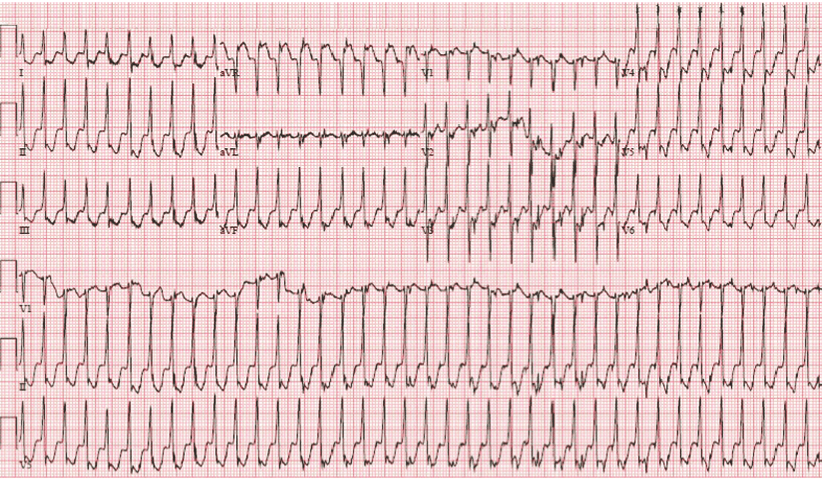 Symptoms may vary based on how long the tachycardia lasts and how fast
Symptoms may vary based on how long the tachycardia lasts and how fast
the
heart rate is. Common symptoms include:
- Chest discomfort
- Shortness of breath
- Fatigue
- Lightheadedness or dizziness
- Pulsations in the neck
- Unpleasant awareness of the heartbeat
(palpitations)
Fainting, more severe chest pain, and nausea are less common
symptoms. In rare cases, SVT can cause sudden death.
How is supraventricular tachycardia diagnosed?
Diagnosis starts with a health
history and physical exam. Your healthcare provider will also use tests to help diagnose
SVT. These tests will help your provider identify the type of SVT you have. They also
help your provider check for possible underlying causes and complications. Tests might
Tests might
include:
- Electrocardiogram (ECG), the most
important first test to check the abnormal rhythm - Continuous electrocardiogram to watch
your heart rhythm over a longer period - Blood work to test for various
causes - Chest X-ray to check for lung problems
and look at the size of your heart - Exercise stress test to see how your
heart works during exercise - Echocardiography to check your heart
structure and function - Electrophysiologic study (EPS) to
evaluate the electrical activity and pathways in your heart
Your primary healthcare provider might first diagnose your SVT. But
But
they’ll likely send you to a healthcare provider who specializes in the heart
(cardiologist).
How is supraventricular tachycardia treated?
SVT needs short-term and long-term
treatment. Options for short-term treatment include:
- Maneuvers to stop SVT, such as bearing
down - Medicines to stop SVT, like calcium
channel blockers, beta blockers, or adenosine - Electrocardioversion, which sends a
shock to the heart to get it back to a normal rhythm - Catheter ablation
Maneuvers are often the first
treatment unless you have severe symptoms. These attempt to activate a nerve called
the
vagus nerve. Activating this nerve can cause a brief slowing of your heartbeat to
break
the abnormal circuit. Your healthcare provider might have you do a Valsalva maneuver
Your healthcare provider might have you do a Valsalva maneuver
(you bear down with your stomach muscles, as though you were trying to have a bowel
movement). Your provider might also try massaging the carotid artery in your neck,
having you blow in a straw, or coughing hard. Each of these techniques can sometimes
bring you out of SVT. If they don’t, your provider might give you medicines. If your
symptoms are severe or your condition is unstable, you will often have
electrocardioversion as the first treatment.
Long-term treatment depends on the
type of SVT and the intensity of symptoms. You may not need any treatment for SVT
if you
have had only 1 episode or the episodes are very rare, especially if SVT went away
with
maneuvers alone. In some cases, your healthcare provider may prescribe medicines to
stop
SVT that you will need to take only as needed.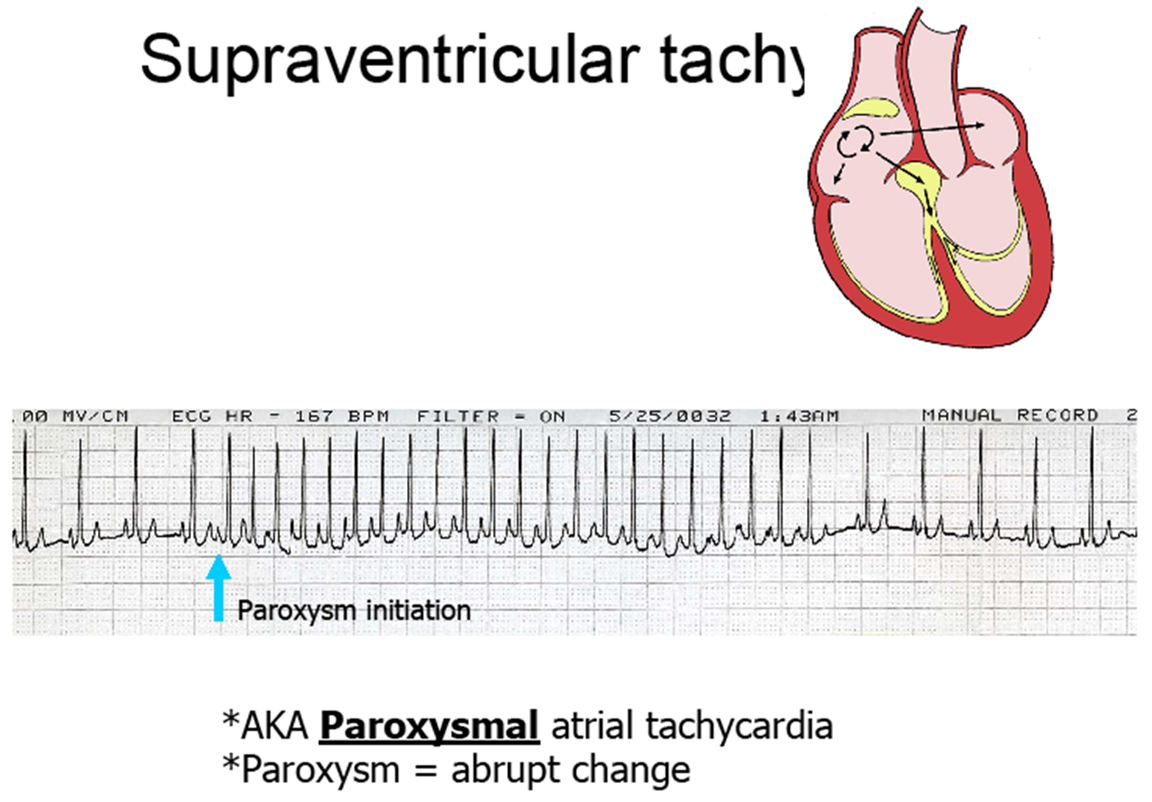 Beta-blockers or calcium channel blockers
Beta-blockers or calcium channel blockers
are common choices. This may be an option for you if you have fewer than 3 episodes
of
SVT per year. But the medicines may often take 15 to 30 minutes to take effect. If
your
SVT is more frequent, you may need to take medicine every day. Some people may need
to
take several medicines to prevent episodes of SVT.
Catheter ablation is the preferred
treatment for recurring SVT. In some cases, it may be the first advised treatment.
Ablation can often cure SVT. The procedure involves placing a small catheter through
a
blood vessel in the groin and threading it to your heart. Your healthcare provider
then
does a small burn or small freeze on the part of your heart that is causing the fast
heart rhythm. Ask your healthcare provider about what treatment option is right for
you.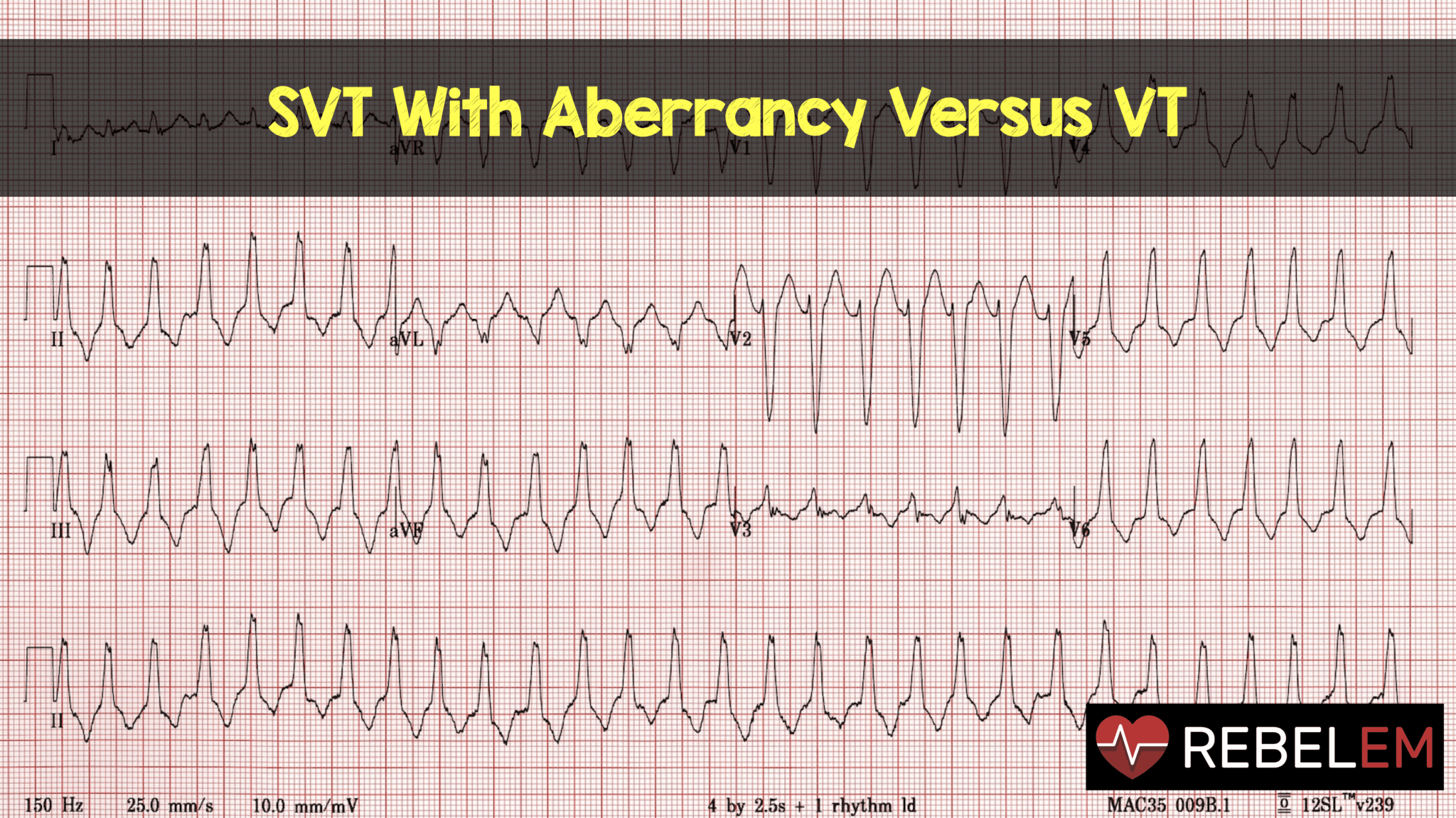
How is supraventricular tachycardia managed?
Your healthcare provider might make
other recommendations to manage your SVT. These might include:
- Cutting back on alcohol and
caffeine - Not smoking
- Reducing stress
- Eating a heart-healthy diet
When should I call my healthcare provider?
Call your healthcare provider if
you have severe symptoms like palpitations, lightheadedness, chest pain, or sudden
shortness of breath. If your symptoms are increasing in severity or frequency, plan
to
see your healthcare provider as soon as possible.
Key points about supraventricular tachycardia
- SVT is a type of abnormal heart rhythm. Something signals a part
outside of the SA node to fire much faster than it should or something triggers the
signal to follow a looping circuit. This results in a fast heartbeat that can last
This results in a fast heartbeat that can last
anywhere from a few seconds to several hours. - There are several subtypes of SVT.
Your treatment options may vary based on what subtype you have. - In rare cases, SVT can cause sudden
death. - You might need a shock to the heart if
you are having severe symptoms from SVT. - Some people with SVT need to take
medicines only when an episode of SVT happens. Others need to take medicine all the
time. Ablation is often a good option for many people. - It is important to follow your
healthcare provider’s instructions about medicine and lifestyle management.
Next steps
Tips to help you get the most from
a visit to your healthcare provider:
- Know the reason for your visit and
what you want to happen.
- Before your visit, write down
questions you want answered. - Bring someone with you to help you ask
questions and remember what your provider tells you. - At the visit, write down the name of a
new diagnosis and any new medicines, treatments, or tests. Also write down any new
instructions your provider gives you. - Know why a new medicine or treatment
is prescribed and how it will help you. Also know what the side effects are. - Ask if your condition can be treated
in other ways. - Know why a test or procedure is a and
what the results could mean. - Know what to expect if you do not take
the medicine or have the test or procedure.
- If you have a follow-up appointment,
write down the date, time, and purpose for that visit. - Know how you can contact your provider
if you have questions.
Medical Reviewer: Steven Kang MD
Medical Reviewer: Anne Clayton APRN
Medical Reviewer: Stacey Wojcik MBA BSN RN
© 2000-2022 The StayWell Company, LLC. All rights reserved. This information is not intended as a substitute for professional medical care. Always follow your healthcare professional’s instructions.
Supraventricular tachycardia (SVT) | First Clinical Medical Center
Supraventricular tachycardia (SVT) is a condition in which the heart suddenly begins to beat much faster than normal. It is usually not serious, but some people may need treatment.
Causes of supraventricular tachycardia (SVT)
SVT occurs when the electrical system that controls the heart’s rhythm is not working properly.
This causes the heart to suddenly start beating much faster. Then it can slow down dramatically.
The normal resting heart rate is 60-100 beats per minute (bpm). But in SVT, the heart rate suddenly rises above 100 beats per minute. This can happen when you are resting or exercising.
Supraventricular tachycardia (SVT) symptoms
Supraventricular tachycardia means that your heart suddenly starts beating faster.
This:
- usually lasts a few minutes but can sometimes last several hours
- may occur several times a day or once a year – it depends on the situation
- may be triggered by fatigue, caffeine, alcohol or drugs – but often no obvious cause
- can occur at any age, but often first begins in children and young adults—many people have their first symptoms between the ages of 25 and 40.
You may not have any other symptoms, but sometimes people with this condition also:
- experiencing chest pain
- feel weak, short of breath or dizzy
- feeling tired
- feeling unwell or sick
Important tip: see your doctor if you have a fast heartbeat.
It is important to get tested. You may need a test, such as an electrocardiogram (ECG), to find out what’s going on.
Call an ambulance immediately if:
- you are diagnosed with SVT and the attack lasts more than 30 minutes
- you have sudden shortness of breath with chest pain
You need to go to the hospital immediately for treatment.
What you can do to help with supraventricular tachycardia (SVT)
If your SVT attacks last only a few minutes and don’t bother you, you may not need treatment.
Disease Prevention
You can make lifestyle changes to reduce the chance of seizures, such as:
- reduce the amount of caffeine or alcohol you drink
- stop or reduce smoking
- make sure you get enough rest.
Your doctor can also give you some simple methods to help stop seizures when they happen.
Treatment of supraventricular tachycardia (SVT) in hospital
Supraventricular tachycardia is rarely life threatening. But you may need treatment in the hospital if you continue to have prolonged seizures.
But you may need treatment in the hospital if you continue to have prolonged seizures.
This may include:
- medicines to treat SVT attacks – pills or by vein
- cardioversion – a small electric shock to the heart to help it return to a normal rhythm
- catheter ablation, a procedure in which thin tubes are inserted through a vein or artery into the heart to correct an electrical problem; in most patients, this solves the problem permanently.
Supraventricular tachycardia (SVT) | First Clinical Medical Center
Supraventricular tachycardia (SVT) is a condition in which the heart suddenly begins to beat much faster than normal. It is usually not serious, but some people may need treatment.
Causes of supraventricular tachycardia (SVT)
SVT occurs when the electrical system that controls the heart’s rhythm is not working properly.
This causes the heart to suddenly start beating much faster. Then it can slow down dramatically.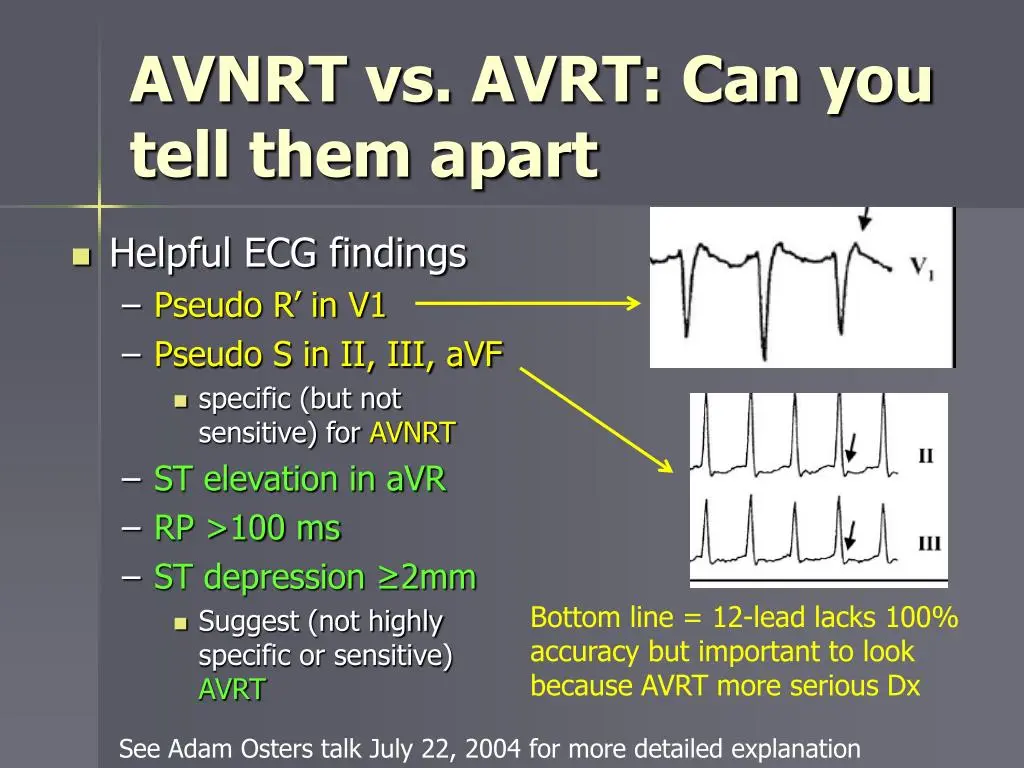
The normal resting heart rate is 60-100 beats per minute (bpm). But in SVT, the heart rate suddenly rises above 100 beats per minute. This can happen when you are resting or exercising.
Supraventricular tachycardia (SVT) symptoms
Supraventricular tachycardia means that your heart suddenly starts beating faster.
This:
- usually lasts a few minutes but can sometimes last several hours
- may occur several times a day or once a year – it depends on the situation
- may be triggered by fatigue, caffeine, alcohol or drugs – but often no obvious cause
- can occur at any age, but often first begins in children and young adults—many people have their first symptoms between the ages of 25 and 40.
You may not have any other symptoms, but sometimes people with this condition also:
- experiencing chest pain
- feel weak, short of breath or dizzy
- feeling tired
- feeling unwell or sick
Important tip: see your doctor if you have a fast heartbeat.
It is important to get tested. You may need a test, such as an electrocardiogram (ECG), to find out what’s going on.
Call an ambulance immediately if:
- you are diagnosed with SVT and the attack lasts more than 30 minutes
- you have sudden shortness of breath with chest pain
You need to go to the hospital immediately for treatment.
What you can do to help with supraventricular tachycardia (SVT)
If your SVT attacks last only a few minutes and don’t bother you, you may not need treatment.
Disease Prevention
You can make lifestyle changes to reduce the chance of seizures, such as:
- reduce the amount of caffeine or alcohol you drink
- stop or reduce smoking
- make sure you get enough rest.
Your doctor can also give you some simple methods to help stop seizures when they happen.
Treatment of supraventricular tachycardia (SVT) in hospital
Supraventricular tachycardia is rarely life threatening.

 The electricity either goes down the AV
The electricity either goes down the AV
 This results in a fast heartbeat that can last
This results in a fast heartbeat that can last
